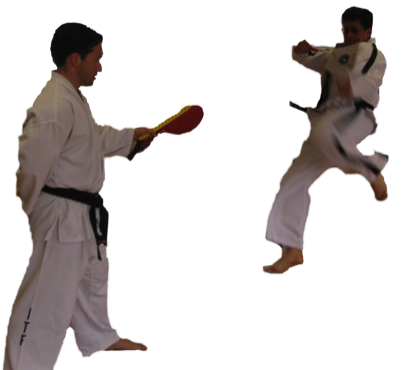

Although the origins of the martial arts are shrouded in mystery, we consider it an undeniable fact that from time immemorial there have been physical actions involving the use of the hands and feet for purpose of self-protection. If we were to define these physical actions as "Taekwon- Do", any country might claim credit for inventing Taekwon-Do. There is, however, scant resemblance between Taekwon-Do, as it is practiced today, and the crude forms of unarmed combat developed in the past.
| Modern Taekwon-Do differs greatly from other martial arts. In fact, no other martial art is so advanced with regard to the sophistication and effectiveness of its technique or the over-all physical fitness it imparts to its practitioners. Technically, 1955 signalled the beginning of Taekwon-Do as a formally recognized art in Korea. During that year, a special board was formed which included leading master instructors, historians, and prominent leaders of society. A number of names for the new martial art were submitted. On the 11th of April, the board summoned by Gen. Choi, decided on the name of Taekwon-Do which had been submitted by him. This single unified name of Taekwon-Do replaced the different and confusing terms; Dang Soo, Gong Soo, Taek Kyon, Kwon Bup, etc. |

In 1959, Taekwon-Do spread beyond its national boundaries. The father of Taekwon-Do and nineteen of his top black belt holders toured the Far East. The tour was a major success, astounding all spectators with the excellence of the Taekwon-Do techniques. Many of these black belt holders such as Nam Tae Hi, President of the Asia Taekwon-Do Federation; Colonel Ko Jae Chun, the 5th Chief of Taekwon-Do instructors in Vietnam; Colonel Baek Joon Gi, the 2nd Chief instructor in Vietnam; Brigadier Gen. Woo Jong Lim; Mr. Han Cha Kyo, the Head Instructor in Singapore and Mr. Cha Soo Young, presently an international instructor in Washington D.C. eventually went on to spread the art to the world.
